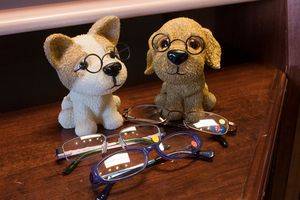Whether you are looking for regular prescription glasses, sunwear or protective sports eyewear, it can be tough choosing the best eyewear for children and teens. On the one hand, they need to be comfortable and provide the optimal fit for improved vision and protection. At the same time, they also need to be durable, especially if your child is active, plays contact sports or tends to drop or lose things. Not to mention, particularly once you get into tween and teenage years, they have to be stylish and look good. When you add in a budget and your child’s opinion, the decision can be truly overwhelming.
Before you begin looking, it is best to narrow down your options by answering the following questions (and consulting your eye doctor when necessary):
- Does my child need to wear his or her glasses all the time or are they for part time wear?
- Does my child’s prescription call for a thicker or wide lens requiring a certain type of frame?
- Does my child have any allergies to frame materials?
- What type of sports protection does my child need?
- Would cable (wrap around) temples or a strap be necessary for my child (particularly in toddlers)?
- Do I have a preference in material or features (such as flexible hinges or adjustable nose pads)?
- Are there particular colors or shapes that my child prefers or that will look most attractive?
Armed with the answers to those questions and a qualified optician, you can begin your search. Keep the following tips in mind:
- Including your children in the selection process will greatly enhance the chances of them actually being excited about wearing and caring for their glasses. So make it fun and exciting for them!
- Polycarbonate or Trivex lenses are impact-resistant lenses that are recommended for children’s eyewear to protect their eyes. Also consider adding a scratch resistant coating.
- When trying on options, consult with the optician to ensure proper fit. Make sure the frames don’t slide off the bridge of the nose, cover the eyes, squeeze at the temples or extend too far behind the ears. Proper frame fit is especially important for kids with specialty prescriptions like bifocals or Myovision, and for kids with lazy eye (amblyopia) and high spectacle Rx.
- If shopping for protective sports eyewear, consider the conditions of the sport your child plays to ensure proper eye protection. They now have much more selection in children’s safety eyewear with cool designs and some glasses even have convertible temples (arms) and straps to become interchangeable dress wear and safety wear.
- Keep in mind that it may be more cost effective to spend a little more on strong and durable eyewear now than to have to replace a flimsy pair later. Each office differs in the warranties they offer and the length and terms of coverage. Ask your optician about what is and is not covered under their frame and lens coverage policy.
- If your child is put into bifocal lenses for reading issues or poor focusing issues (commonly used in pediatric vision therapy) they will generally require a deeper frame in order to have enough room for the bifocal, which is often difficult when dealing with smaller frames.
- Consider a blue light protecting anti-reflective coating. Children are especially prone to damage from blue wavelengths of light because their human lenses are so clear. Blue light is emitted from many of the devices we use such as cell phone screens, tablets, laptops, TVs, and the sun as well.
The great news is that the options in children’s eyewear in terms of style, quality and innovation is progressing rapidly. Rather than dreading the eyewear shopping experience, have a positive attitude. This will have a positive influence on your child’s relationship to eyewear and good vision that can last a lifetime.


